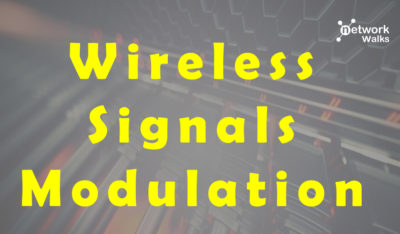
Signals and Modulation of WiFi & Wireless are very important networking concepts for computer networking & are used in wireless communication. Wireless signals are crucial since they can transmit data in form of audio, video, etc without cables or wires. Modulation is the process of converting information signals into a different form.
Some of the common types of wireless signals include Television and Radio Broadcasting, satellite, Global Positioning Systems (GPS), Bluetooth, Cellular phones, Wi-Fi, cellular phones, etc.
Wireless Signal terms
Some of the important wireless terms are listed below:
- Frequency is defined as the number of cycles completed per second and it is measured in hertz (Hz)
- Phase is when two sine waves have the same frequency and occur at the same time
- The difference in phase can be measured in degrees, and it is known as the phase angle
- Wavelength (λ) is a measure of the physical distance a wave travels in one complete oscillation
Understanding RF Power and decibel (dB) in Wireless Signals Modulation
For an RF signal to be transmitted, propagated through free space, received, and understood with any certainty, it has to be sent with enough strength or energy to make the journey. Such strength can be measured as the amplitude, or height from the top peak to the bottom peak of the signal’s waveform

The strength of an RF signal is often measured in watts (W), by its power. At times, you might need to compare the power levels between two distinct transmitters
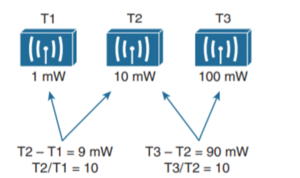
The decibel (dB) is a function that makes use of logarithms to compare sound intensity levels, and it is also applicable to power levels. It is given as:

Important Laws of dB in Wireless Signals Modulation
The important laws of dB are given below:
Law of Zero: A value of 0 dB denotes that the two absolute power values are the same. If the two power values are the same, then the ratio in the logarithm is 1, and log(1) equals 0. The Law of Zero is instinctive, when two power levels are the same, then one is 0 dB greater than the other
Law of 3s: A value of 3 dB signifies that the power value of interest is twice as much as the reference value
Law of 10s: A value of 10 dB signifies that the power value of interest is 10 times the reference value
The table below gives the summary of dB Laws:
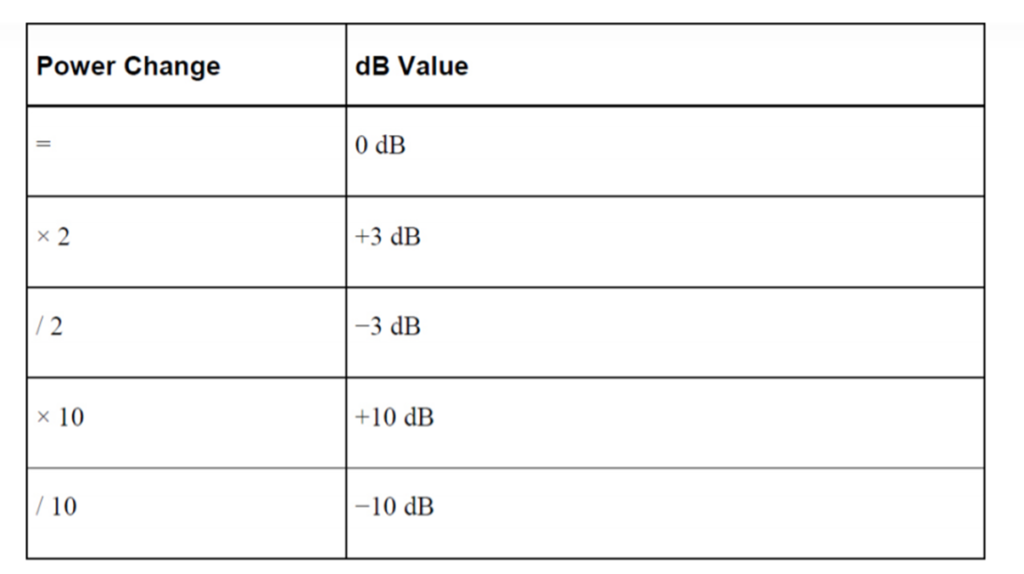
EIRP
EIRP stands for
Effective
Isototpic
Radiated
Power. It is the hypothetical power that has to be radiated from an isotropic antenna or receiver
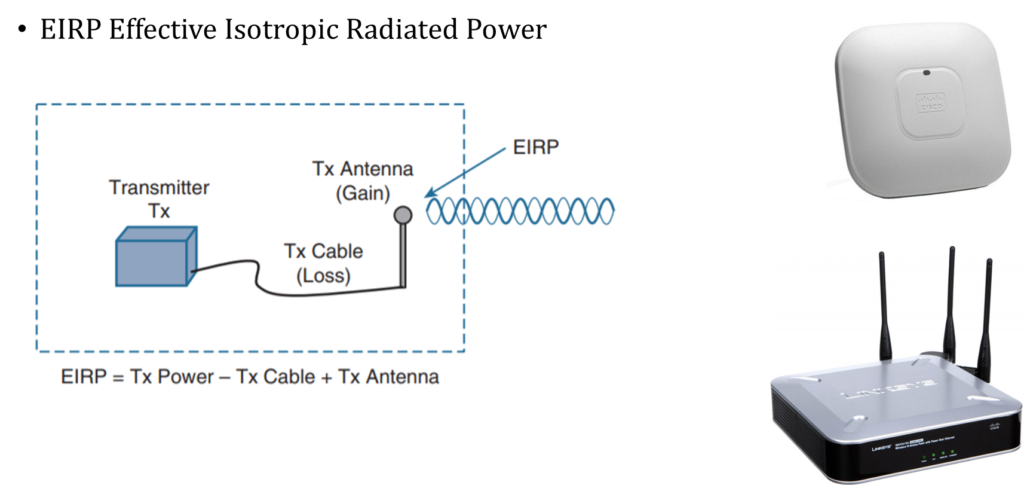
Measuring Power Changes Along the Signal Path
The value is determined as a combination of transmitter power, loss from cable length, and antenna gain. The formula for calculating EIRP: EIRP = Tx Power – Tx Cable + Tx Antenna
In order to calculate the received signal strength, start with the transmitter power which is expressed in dBm, add or subtract the dB components along with the signal path to get the signal strength that arrives at the receiver or antenna
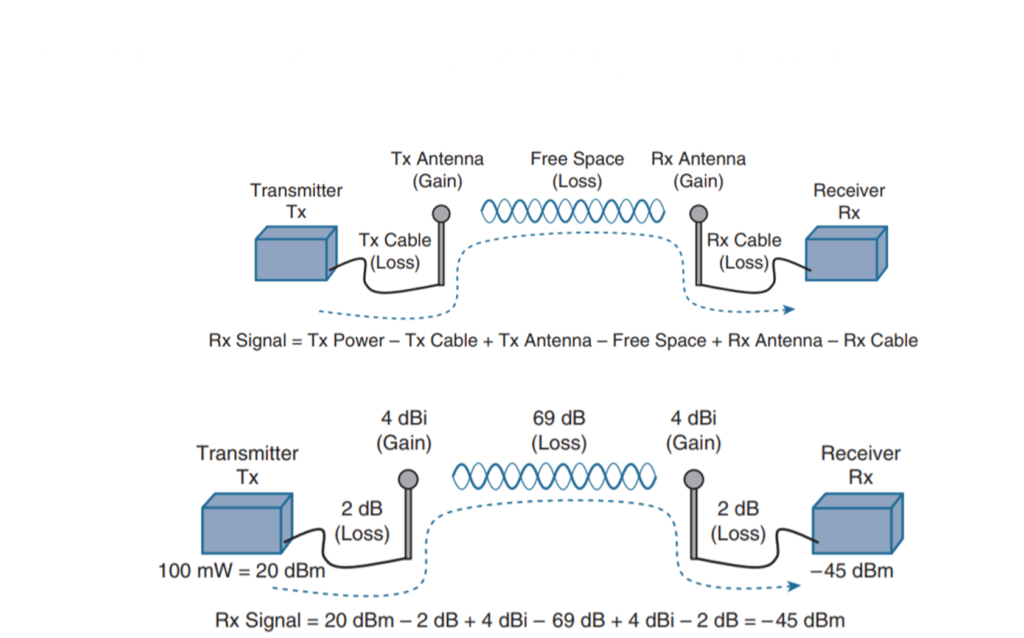
FSPL and coverage area
FSPL is short for Free space path loss. Free space path loss is an exponential function; the signal strength falls off quickly near the
transmitter but more slowly far away. It is affected by distance and frequency
Free space path loss is much more in the 5GHz band than it is in the 2.4GHz band. The following below indicates the range difference, where both transmitters have the same EIRP. The dashed circles show where the effective range terminates, at the instance where the signal strength of every transmitter is the same
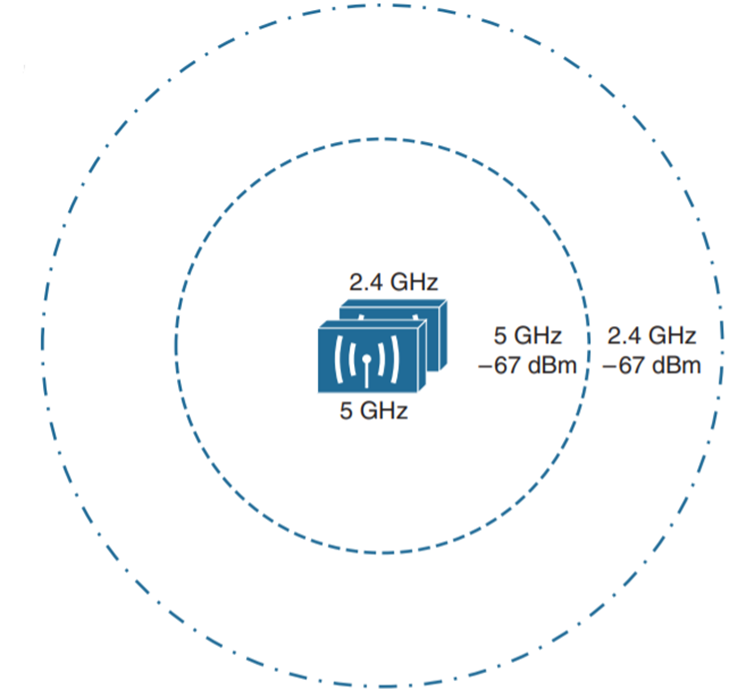
Wireless Signal Modulation Carrying Data over RF Signal
Signal modulation is the process where a carrier signal is converted in order to carry a data signal. WLANs must carry data at high bit rates, which requires more bandwidth for modulation. Due to the physical properties of an RF signal, a modulation scheme can alter only the; Frequency (by varying slightly above or below the carrier frequency), Phase, and Amplitude. Data being sent spreads across a range of frequencies, known as the spread spectrum
DSSS (Direct sequence spread spectrum): Used in the 2.4 GHz band, where a number of fixed, wide channels support complex phase modulation schemes and a little bit scalable data rates which makes it adaptable to disruption
OFDM (Orthogonal Frequency Division Multiplexing): Used in both 2.4 and 5 GHz bands, where a single 20 MHz channel contains data that is sent in parallel across various frequencies
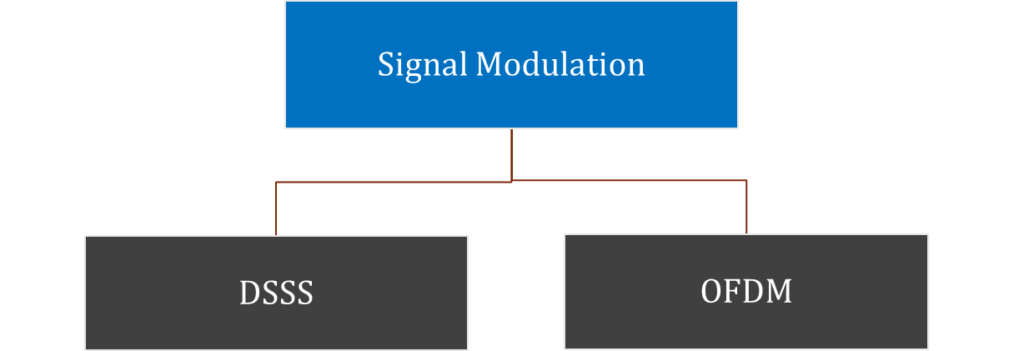
Maximizing the AP-Client Throughput
Below illustrates the dynamic rate shifting (DRS) operation on the 2.4 GHz band. Every concentric circle represents the range supported by a special modulation and coding scheme. Note the white circles signify OFDM modulation (802.11g), and the shaded circles contain DSSS modulation
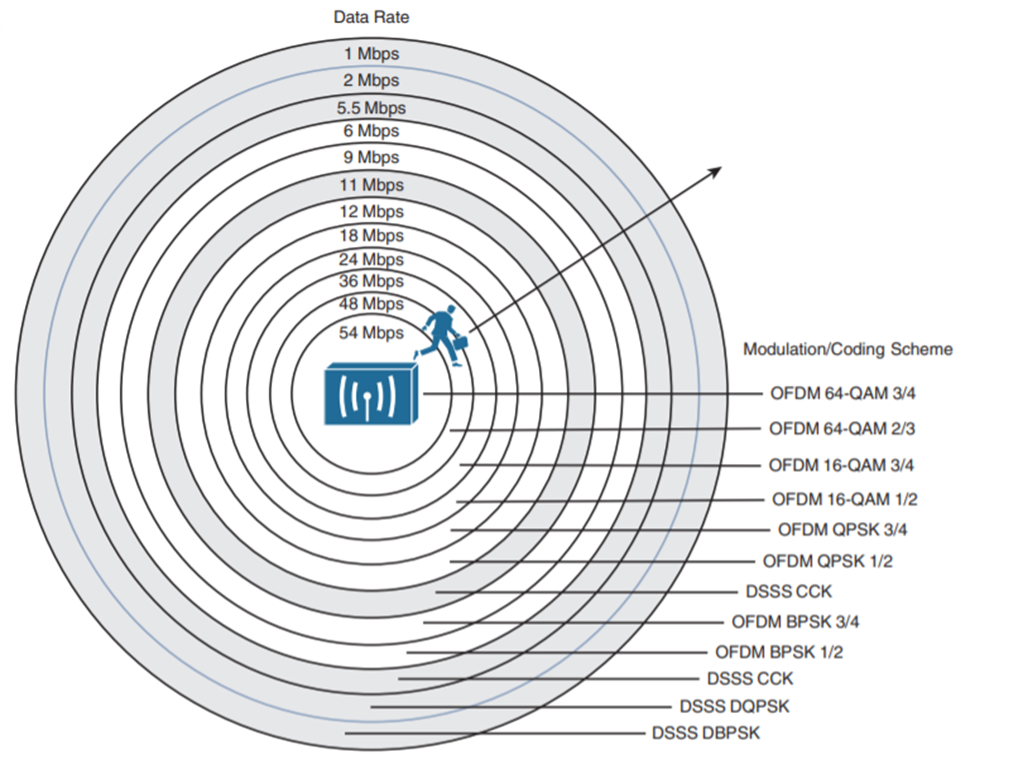
-End-
Wireless WiFi Roaming
WLAN and WiFi Infrastructure
You might also be interested in our free Online Quizzes on all IT topics including Cisco CCNA, Cyber Security, Python Programming, Linux & Ethical Hacking:
Free Online Quizzes (Best for Cisco CCNA, Huawei HCNA, N+)
You can also view free study notes (Cheat sheets) for long term memory:
Networkwalks Summary Cheatsheets
 Signals and Modulation of WiFi & Wireless are very important networking concepts for computer networking & are used in wireless communication. Wireless signals are crucial since they can transmit data in form of audio, video, etc without cables or wires. Modulation is the process of converting information signals into a different form.
Some of the common types of wireless signals include Television and Radio Broadcasting, satellite, Global Positioning Systems (GPS), Bluetooth, Cellular phones, Wi-Fi, cellular phones, etc.
Signals and Modulation of WiFi & Wireless are very important networking concepts for computer networking & are used in wireless communication. Wireless signals are crucial since they can transmit data in form of audio, video, etc without cables or wires. Modulation is the process of converting information signals into a different form.
Some of the common types of wireless signals include Television and Radio Broadcasting, satellite, Global Positioning Systems (GPS), Bluetooth, Cellular phones, Wi-Fi, cellular phones, etc.










